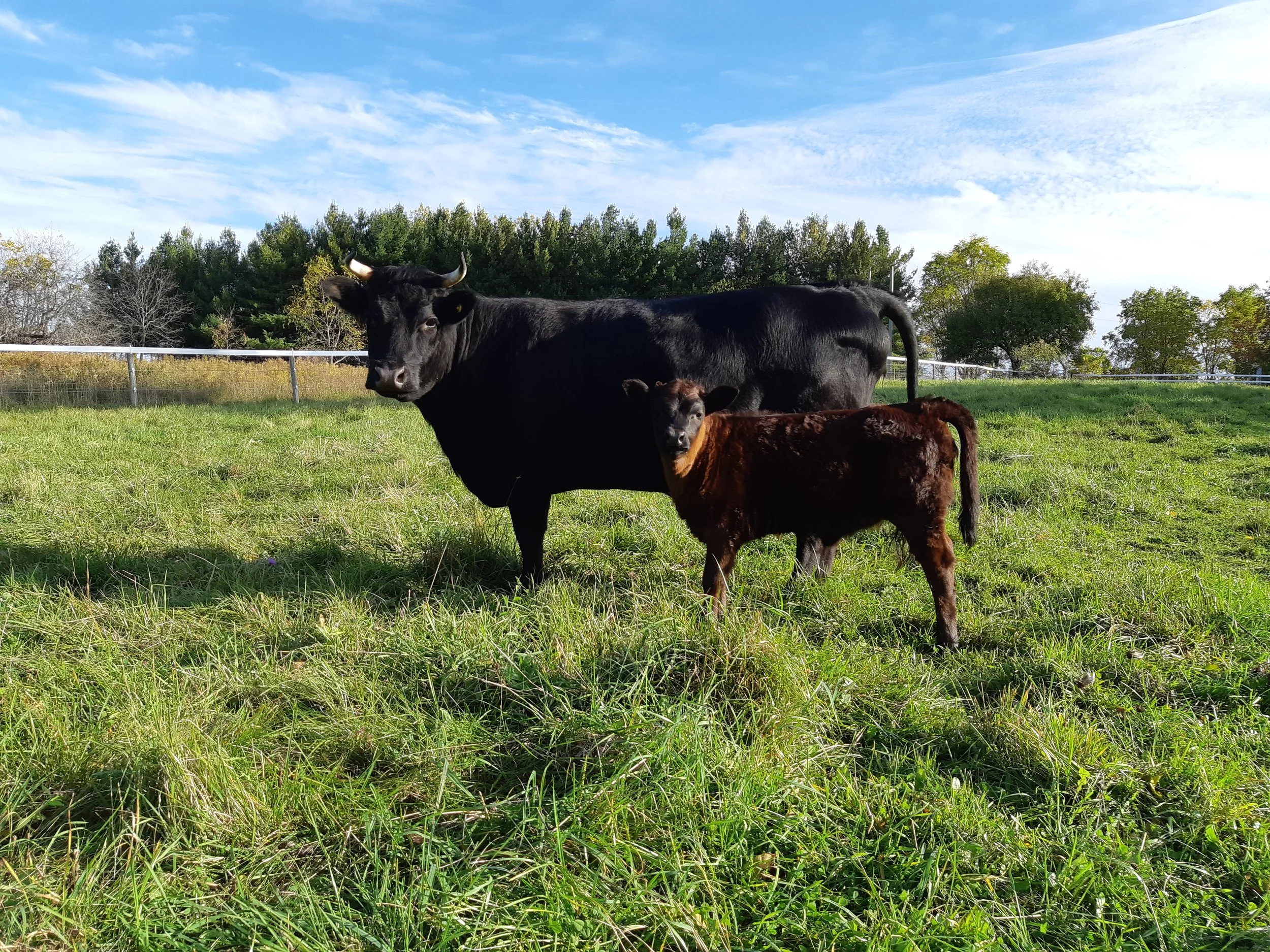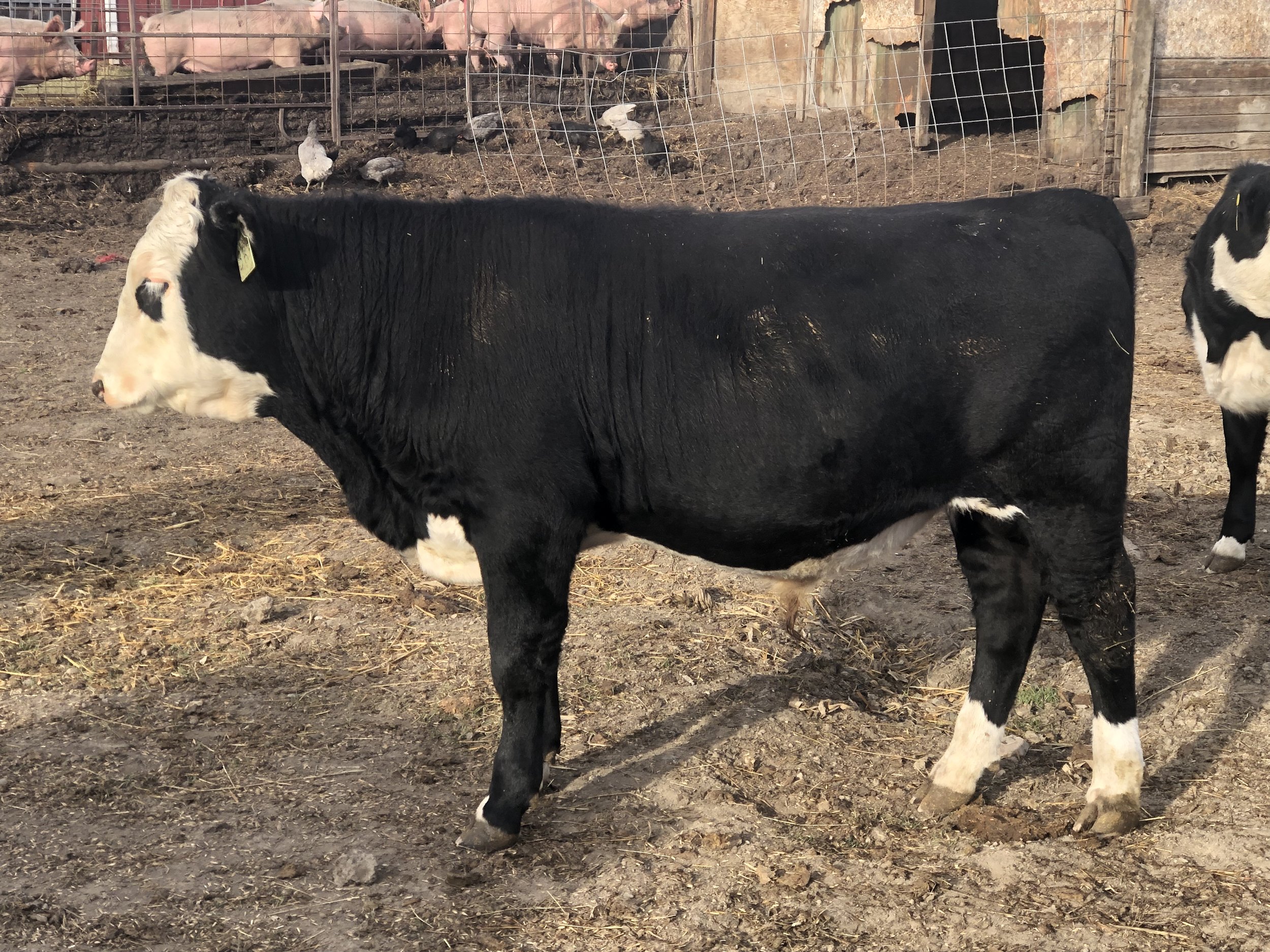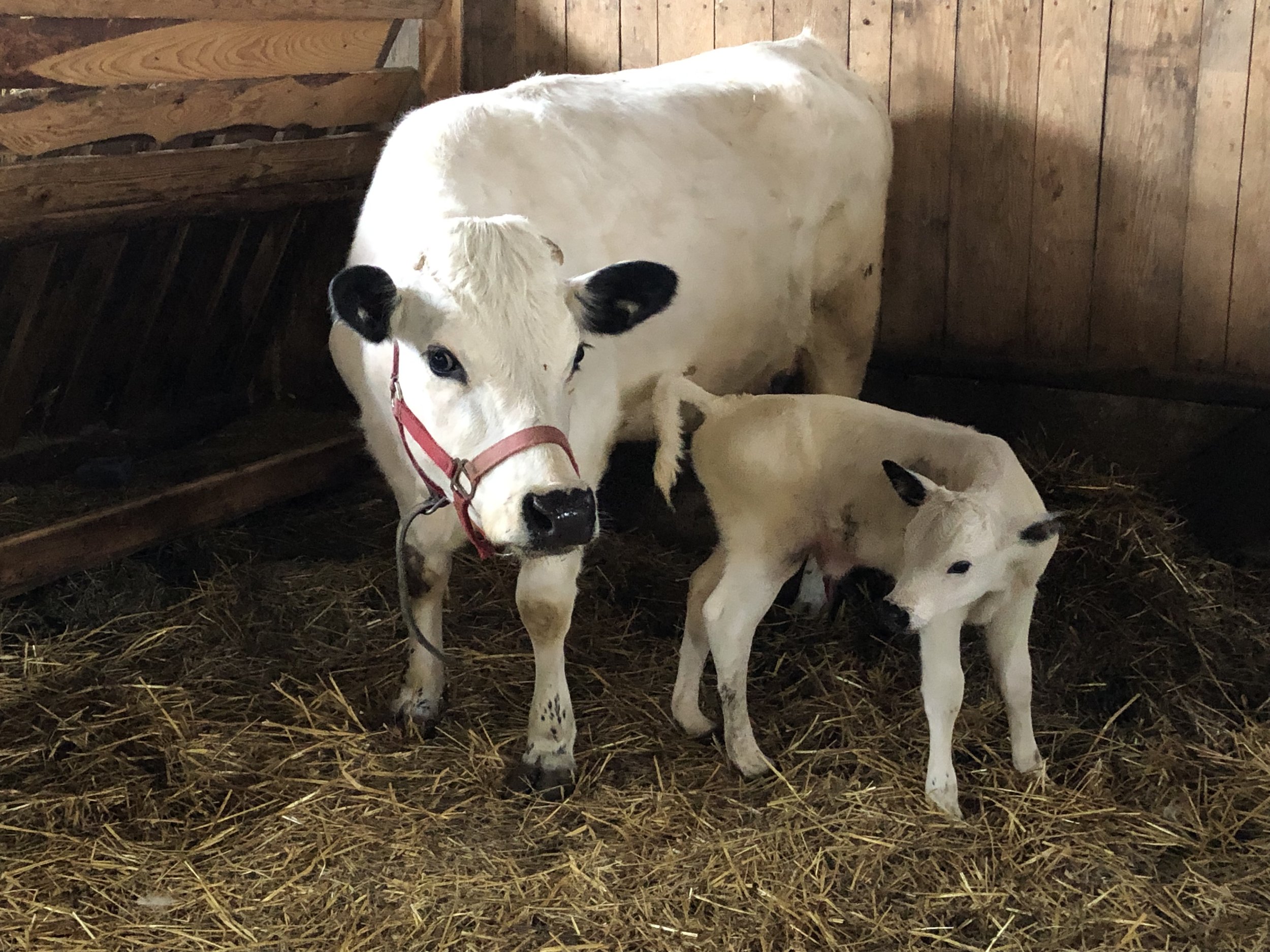
Heritage cattle, naturally built for a sustainable future
White Park Calf
HLC’s Elwood Quinn, shared a video of a young White Park bull calf finding his feet. Calves at this stage in life are reliant upon their mother’s milk and the herd owner ensuring the calf has ingested colostrum. Full of natural antibodies, colostrum is essential for the survival and future health of the calf. If a calf does not receive colostrum within the first hours of life, it must be supplemented with a high quality replacement.
Halter Trained Highland
HLC Member Alice Bird demonstrates how well a trained Highland can be managed. Halter training allows the handler to have control over the cow when necessary. In modern times, halter training is more commonly done using low stress methods.
Heritage Cattle Breeds
-

Dexter
Dexter cattle originated in Southern Ireland. The breed is considered to be dual purpose (meat and milk). Dexter are the smallest recognized cattle breed in the world - as such they are valued for their effective feed conversion.
Dexter can be black, dun and red in colour. However, those born with a red colour coat need to be DNA verified in Canada. Cows average 750lbs and bulls 1000lbs. Known for their versatility, hardiness and docility, Dexter are uniquely suited to small farms. Considered to be dual purpose, they can also be mllked.
-

Lakenvelder
Lakenvelder (also known as Dutch Belted) were originally bred in Austria and Switzerland, but Dutch nobility took an interest in the breed and had them moved to Holland. The breed became popular in the 1700's, but in recent decades the population had dropped to approximately 100 animals in total. Dutch farmers saw the need to preserve the Lakenvelder and today there are an estimated 3,000.
Lakenvelder are dual purpose, can be used for milk production, have good quality meat and also grow well on a forage ration. Their colouring is also distinct.
-

Belted Galloway
Belted Galloway are perhaps the most recognized Galloway. Affectionally called Belties the breed is thought to have resulted with the cross of Galloway and Lakenvelder (Dutch Belted cattle), during the 1600's.
Belted Galloway are distinct for their white belt, the remainder of the body can be black, red or dun - with black being the most common colouration. Well suited to rough grazing, the breed is hardy and feed efficient. Their double coat makes them ideally suited to Canadian winters. Belted Galloway are also anecdotally noted as having a higher milk production than their Galloway and White Galloway counterparts.
-

Galloway
In Canada, there are 3 distinct Galloway registered with the Canadian Galloway Association. The traditional solid Galloway, Belted Galloway and White Galloway. Galloway came to Canada in the 1850's and have had a presence ever since. The association has the distinction of holding the longest running, closed Galloway herd book in the world.
Originally bred in Scotland, Galloway were black, red and dun. Belted Galloway were bred later - affectionately known as Belties. White Galloway are the "newest" edition to the breed.
They are especially suited to the Canadian climate, with a naturally thick, double hair coat, which repels wet and acts as a natural insulation. Galloway are naturally polled. The breed as a whole also thrives in a forage based setting.
-

White Galloway
White Galloway share a striking colour resemblance to ancient cattle breeds. They are the most recent addition to the Galloway herdbook. White Galloway are also far lesser in number than their couterparts.
-

Hays Converter
Named after the Senator Harry Hays who developed the breed in Alberta. Senator Hays envisioned a breed, which would have the ability to mature to market weight as quickly as possible. To develop Hays Converter, he utilized three breeds starting in the 1950's - Holstein, Hereford and Brown Swiss - by 1975, the breed became distinct and was officially recognized under the Animal Pedigree Act. goes here
-

Highland
Highland cattle are easily recognizable for their long, shaggy coat and distinctive horns. An ancient breed, Highland cattle were important to the Scottish agricultural economy for a long period of time.
The 1885 Scottish herd book gave descriptions of two types of Highland cattle, one from the West which was black in colour and much smaller than their Eastern counterparts - who were larger and had more of a variety of colour coats. Eventually the two were cross bred and became a type.
First introduced into Canada in the 1880's the Highland herd started in Manitoba, but didn't show any real increase in number until the 1920's when higher numbers of cattle were imported. Today Highland cattle are placed as "At Risk" on HLC's conservation list.
Highland cattle have thrived in Canada and Canadian genetics have been exported across the world. The breed as a whole is known for their cold tolerance, due to their double hair coat and strong maternal instincts.
-

Lincoln Red
Lincoln Red originated in the county of Lincolnshire, which is situated in the North East of England. Genetically there are suggestions that their history dates back to the time of the Vikings. In 1695, the quality of Lincolnshire cattle was mentioned in writings. It was n't until the 18th and 19th centuries that the breed became closer to the Lincoln Red that we know today. Cherry Red Durhams and York Shorthorns were bred together to become Lincolnshire Red Shorthorn. In subsequent years, as the emphasis was placed on naturally polled animals - Shorthorn was dropped from the breed name. For a period of time milking and dual purpose Lincoln Red were registered, but the last milking entry was made in 1965, in the UK, as the breed moved towards a strictly beef animal.
Lincoln Red are a distinctive deep cherry red colour. The breed has maintained high milk production, strong mothering instincts and an ability to be raised and convert well in pasture settings. Lincoln Red are long lived, strong footed and quiet in nature. In terms of cross breeding programs, when utilizing Lincoln Red sires - there are reports that breeding to continental sires is not always a successful cross - however the Lincoln Red has compared to Hereford in terms of growth rate in modern trials.
-

Red Devon
Red Devon are an ancient breed and have existed on the North American continent since the early 1600's. Known for their easy fleshing ability and growth rate, particularly on pasture - Red Devon make an sound alternative to more "mainstream" breeds.
Red Devon are especially suited to being managed on a forage diet alone. The breed as a whole is pre-potent and adaptable. Whilst also having strong maternal instincts, a good disposition and longevity.
-

Red Poll
Red Poll were originally bred in England during the early 1800's. The resulting cross from the now extinct Suffolk Dun and Norfolk Red, they were dual purpose animals. As times changed the cows were milked less and became suckler cows. Their strong bone, easy fleshing and rich milk made them ideally suited for this purpose. Red Poll are a docile breed, efficient feed convertors, easy calving and often used as part of conservation projects to improve pastures. They can also still be utilized as dual purpose cattle.
Registration of Red Poll is available through CLRC.
-

Welsh Black
There are accounts of Welsh Black dating back to pre-Roman times in Wales. Such was their popularity in the 1700's that drovers on their journey to London and back became the target of highwaymen and robbers. The wealth created at the time, meant the formation of the Bank of the Black Oxen - later purchased by Lloyd's Bank of London. During the 20th century, breeders conformed Welsh Black to meet modern demands - as the focus shifted from dual purpose to meat production.
Ideally suited to both purebred operations and the use of bulls as herd sires in cross breeding programs.
Welsh Black can be registered through CLRC.
-

White Park
White Park were first introduced into Canada in the 1940's when Winston Churchill sent across two females from the UK. The descendants of these cows were moved to the Bronx Zoo and after which were released to the King Ranch in Texas, where they remained for a number of years. White Park were subsequently brought back to Canada. In recent years commendable efforts have been made to ensure the survival of this unique breed in Canada.
White Park are an ancient breed, existing for around 2,000 years. Utilized as draught, meat and milk animals - White Park have an especially tender, flavourful meat, which commands premiums in speciality markets. In terms of production - White Park are best suited to a non-intensive setting. Right now the focus is on the preservation of the breed in Canada - but these traits are worth remembering.
Resources
-

Why Choose A Heritage Beef Breed?
An interesting blog focusing on all heritage breeds. However, the reasons provided for maintaining a heritage beef breed are equally applicable.
-

Grazing Management
Heritage beef breeds are particularly suited to forage based management. The Beef Research Council in Canada offers a useful guide to grazing practises.
-

Holistic Grazing Management
Holistic management means working with and alongside nature, for a sustainable future. Holistic grazing practises are often used for heritage cattle breeds.
-

Steps For Direct Marketing Beef
Developing markets is an essential componenet of keeping heritage breeds, beef cattle are no different.
The Canadian Cattleman’s Association put together four starting questions to consider and implement in order to assess direct markets.
Always check provincial regulations for the direct marketing of meat.
-

Oxen
Oxen can be either beef or dairy cattle. Plainfield Heritage Farm is currently the only farm in Canada offering tuition on raising and training oxen.
Oxen were utilized across Canada at the turn of the 20th century.
-

Canadian Highland Breeders Group
A good resource on Facebook for those with and considering Highland cattle.
-

HLC Beef Cattle Representative
Do you have questions? HLC’s Beef Cattle Representative, Monty Thomson can help.